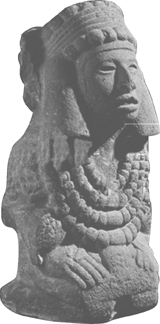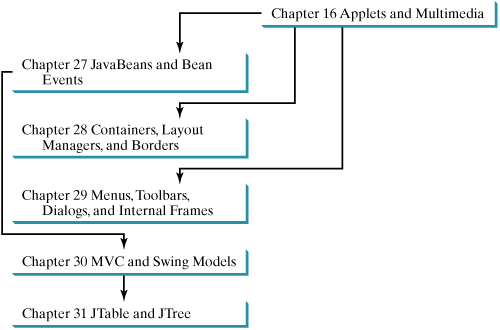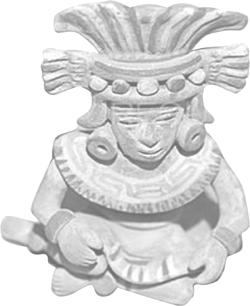[Page 895] The Goddess Chalchihuitlicue, found in the Valley of Mexico, 1300-1500 AD (stone), Aztec / Muse de l'Homme, Paris, France / Bridgeman Art Library. 
In Part 3, "GUI Programming," you learned how to develop GUI programs, event-driven programming, creating user interfaces, and applets. This part introduces Java GUI programming in more depth and breadth. You will delve into JavaBeans and will learn how to develop custom events and source components in Chapter 27, review and explore new containers, layout managers, and borders in Chapter 28, learn how to create GUI with menus, popup menus , toolbars , dialogs, and internal frames in Chapter 29, develop components using the MVC approach and explore the advanced Swing components JSpinner , JList , JComboBox , JSpinner , and JTable , and JTree in Chapters 30 and 31.
[Page 896] Prerequisites for Part 7
The part can be covered after Chapter 16, "Applets and Multimedia."

Pedagogical Tip
 | This part does not require the use of Java GUI builder tools. Nevertheless, Java GUI builder tools such as NetBeans, JBuilder, and Eclipse can help demonstrate JavaBeans and are effective tools for learning advanced GUI programming. Supplements VII and VIII on the Companion Website introduce how to use NetBeans, JBuilder, and Eclipse to rapidly develop Java GUI programs. |
| | Chapter 27 JavaBeans and Bean Events | |
| | Chapter 28 Containers, Layout Managers, and Borders | |
| | Chapter 29 Menus, Toolbars, Dialogs, and Internal Frames | |
| | Chapter 30 MVC and Swing Models | |
| | Chapter 31 JTable and JTree | |
[Page 897] Chapter 27. JavaBeans and Bean Events
Mayan God Shel, Mexico. Photographer: Philip Coblentz. Courtesy Brand X Pictures.

[Page 898] 27.1. Introduction
Every Java user interface class is a JavaBeans component. Understanding JavaBeans will help you to learn GUI components. In Chapter 14, "Event-Driven Programming," you learned how to handle events fired from source components such as JButton , JTextField , JRadioButton , and JComboBox . In this chapter, you will learn how to create custom events and develop your own source components that can fire events. By developing your own events and source components, you will gain a better understanding of the Java event model and GUI components.


